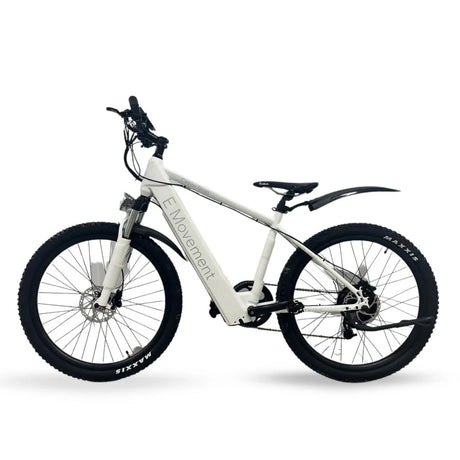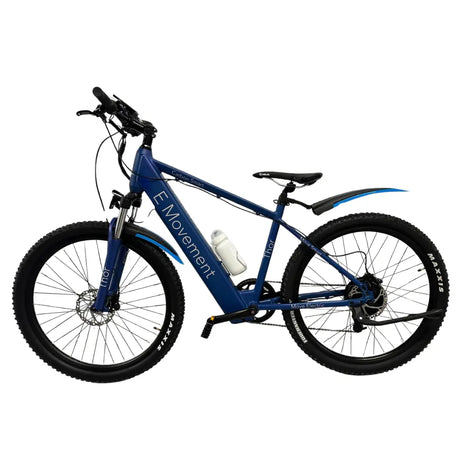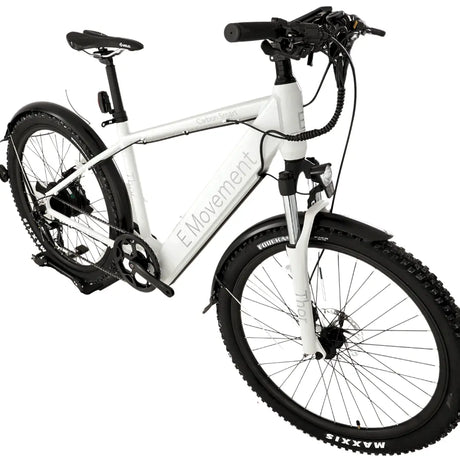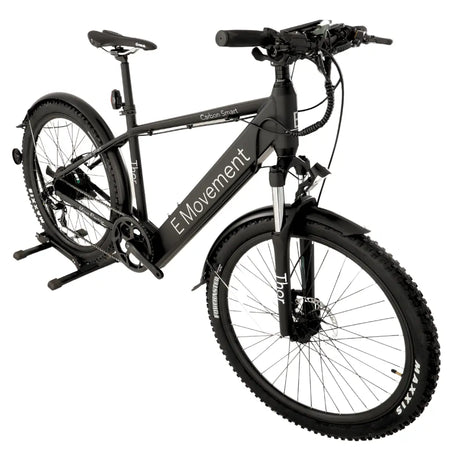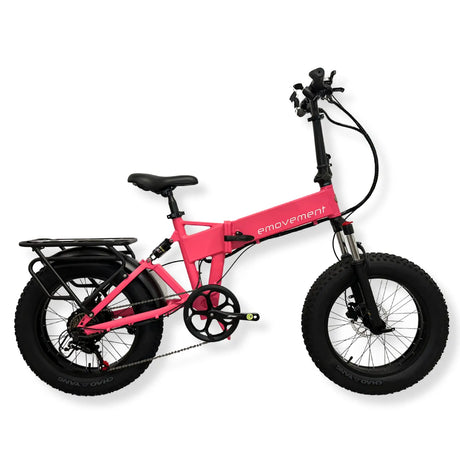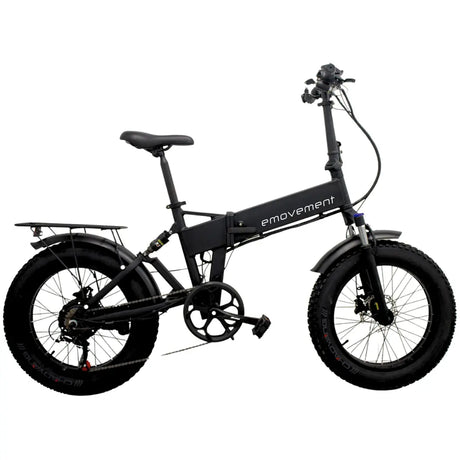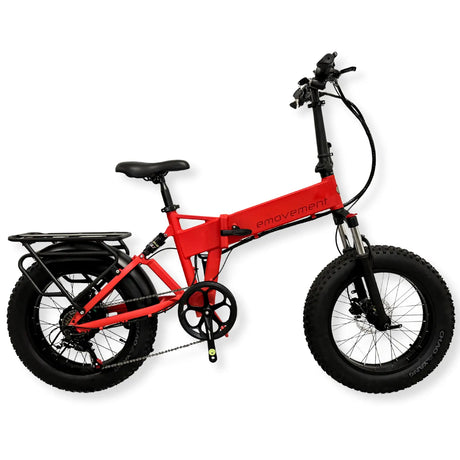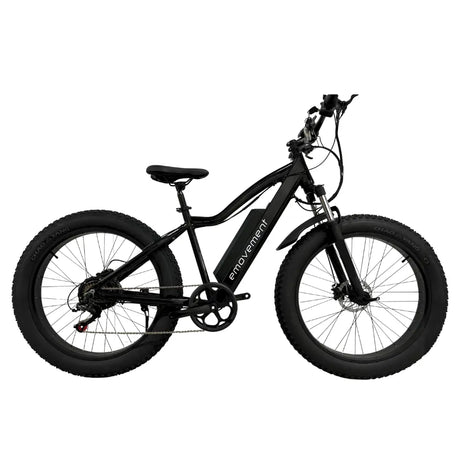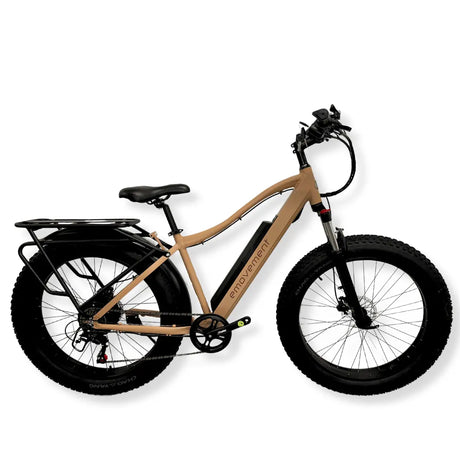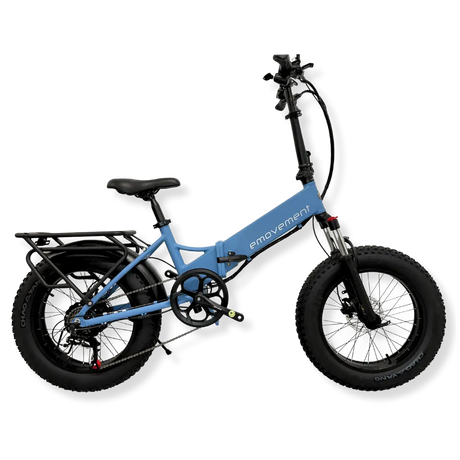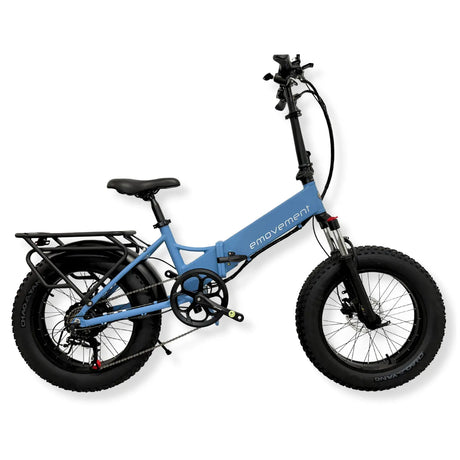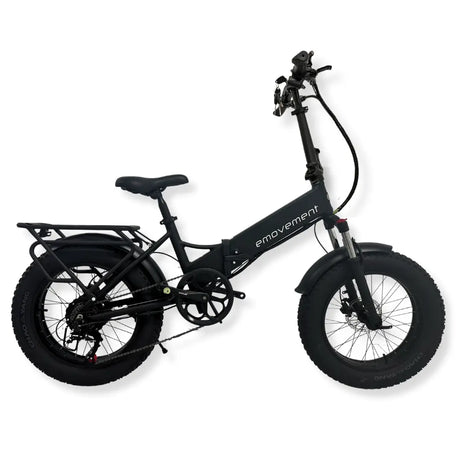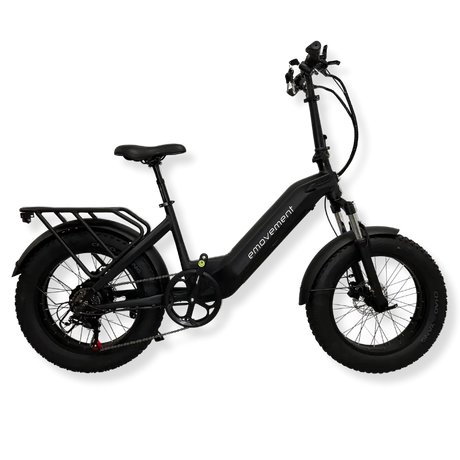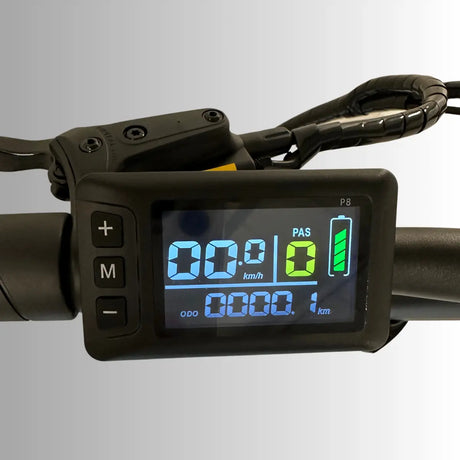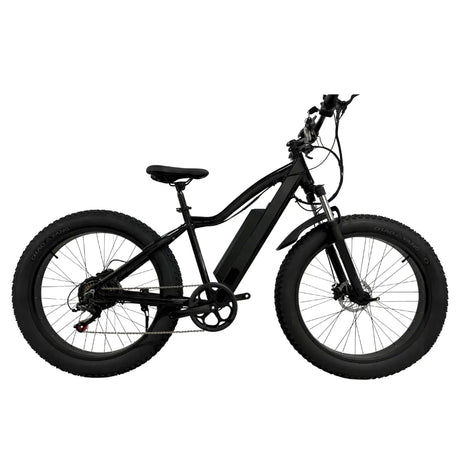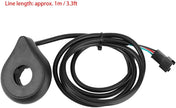Electric bikes, or e-bikes, are steadily becoming a popular alternative to traditional bicycles across the UK due to their sustainability and efficiency. A key component that sets them apart is the battery, powering the electric motor to add a ‘boost’ to your pedalling efforts.
An e-bike battery is the powerhouse of your pedelec , storing energy that can be used to assist you while pedalling. This mechanism makes cycling less strenuous and more enjoyable, particularly over hilly terrains or longer distances. Most e-bike batteries in the UK are rechargeable lithium-ion batteries, known for their high energy density, long life span, and relatively low weight. Keep reading as we provide a comprehensive guide on everything you should know about e-batteries, like ‘how long do electric bike batteries last’ and ‘how to reset an electric bike battery.
The Types of Electric Bike Batteries
There are several types of electric bike batteries , each with its own unique characteristics, advantages, and disadvantages. The most common types include lithium-ion, lithium-polymer, nickel-metal hydride (NiMH), and lead-acid batteries. Let’s dive into each one:
i. Lithium-Ion Batteries
As the most common type of battery used in electric bikes today, Lithium-Ion batteries are popular for several reasons:
- High Energy Density : Lithium-ion batteries can store a lot of energy relative to their weight and size. This is crucial for electric bikes as it allows for a longer range without adding significant weight.
- Long Lifespan : Typically, these batteries last between 500 to 1,000 full charge cycles. With appropriate care, a battery can last between 3 to 5 years.
- Efficient Charging : Lithium-ion batteries charge faster than most other types and they don’t suffer from the memory effect, meaning you can charge them even if they are not completely discharged.
However, they are more expensive than other battery types, and their performance degrades in extreme temperatures .
ii. Lithium-Polymer Batteries
Lithium-polymer batteries are a variant of lithium-ion batteries. They have similar benefits, including high energy density, long lifespan, and efficient charging. However, their unique advantage lies in their flexible form factor.
Using a polymer electrolyte instead of a liquid one, this type of battery comes in various sizes and forms. Lithium-polymer batteries are often found in electric bikes with unique or compact designs, but the downside is that they can be even more expensive than standard lithium-ion batteries.
iii. Nickel-Metal Hydride (NiMH) Batteries
A popular choice before the advent of lithium-ion and lithium-polymer batteries, NiMH batteries possess decent energy density and are more affordable than their popular counterparts.
Unfortunately, these batteries are heavier and have a shorter lifespan, typically around 500 charge cycles. They also suffer from the memory effect, reducing your battery’s capacity over time if you regularly partially discharge and then recharge the battery.
iv. Lead-Acid Batteries
Lead-acid batteries are the oldest type of rechargeable battery. They are the least expensive option and can provide high power output. This has led to their continued use in applications where weight is not a significant concern, like in electric scooters or stationary energy storage.
Still, they have considerable disadvantages for e-bikes: They are heavy, have a lower energy density, and have shorter lifespans (typically around 200-300 charge cycles). And Lead-acid batteries require more maintenance because they need to be kept fully charged to prevent sulfation and potential damage.
Understanding Battery Capacity (Ah)
Battery capacity , measured in amp-hours (Ah) or watt-hours (Wh), is a crucial factor when considering an e bike battery. This capacity indicates the amount of energy a battery can store, impacting a rider’s range – the distance an e-bike can travel on a single charge.
Most UK electric bikes typically boast a range between 32-80 kilometres, depending on battery capacity, rider weight, terrain, and how much you’re using the motor. Understanding the relationship between battery capacity and range can aid you in choosing the right bicycle and the best ebike battery for your needs.
Ampere-hour (Ah): An Explanation
An Ampere-hour (Ah) is a unit that measures electric charge, signifying the amount of electric current that can be supplied by a battery per hour. For example, if an electric bike battery is rated at 1 Ah, it can deliver a continuous 1-ampere current for an hour, or a 2-ampere current for 30 minutes, and so forth. The Ah unit is a basis for estimating how long a battery can power a device before it needs recharging.
Amp-hours play a pivotal role in determining your e-bike’s performance. The battery’s capacity (Ah) combined with its voltage (V) gives you the energy content in watt-hours (Wh). And Watt-hours determine the range of your e-bike, i.e., how far you can travel on a single charge.
Consequently, a battery with a higher Ah rating can provide a longer range, given that the voltage remains constant. For instance, a 48V 20Ah battery (960Wh) would potentially give you twice the range of a 48V 10Ah battery (480Wh) under the same riding conditions.
Remember, however, that a larger electric bike battery capacity will likely be physically larger, heavier, and potentially more expensive. So, there’s a trade-off between battery capacity (Ah), bike weight, and cost.
Choosing the Right Battery Rating (Ah) for Your Needs
Selecting the right Ah for your electric bike depends on your specific cycling needs and conditions, such as:
- Distance: If you plan to cycle long distances regularly or don’t want to charge your battery frequently, you may want to opt for a higher Ah rating, which provides a longer range.
- Terrain: Steeper or challenging terrains require more power, as they deplete the battery faster. A higher Ah battery could be beneficial in these situations.
- Rider Weight and Cargo: The more weight the bike needs to carry, the harder the motor has to work, which drains the battery more quickly. If you’re a heavier rider or regularly carry heavy loads, you may require a battery with a higher Ah rating.
- Budget: Larger-capacity batteries can be more expensive. It’s important to balance your performance needs with your budget. Remember, a larger capacity battery will not make your bike faster or more powerful, rather it’ll just increase the range.
Electric Bike Battery Voltage and Its Influence on Performance
The voltage of an electric bike battery is a measure of its electrical potential, commonly rated in volts (V). In simple terms, you can think of voltage as the amount of “pressure” pushing the electric current from the battery through the motor.
The Voltage Rating of Electric Bike Batteries
Most UK e-bikes have battery voltages ranging from 24V to 48V. Some high-performance e-bikes can have batteries with voltages of 52V or even higher. Higher voltage ratings are typically integrated into a more powerful bike, but the motor and controller must be designed to handle that increased power.
Effects of Voltage on Speed and Power
Let’s take a look at how voltage impacts a pedelec’s speed and power:
Speed
Voltage is directly related to an e-bike’s speed. Higher voltage will cause the electric motor to spin faster, assuming the motor can handle it. As a result, electric bikes with higher voltage batteries can reach higher top speeds. Nevertheless, e-bike motors are legally limited to providing assistance up to 15.5 mph in the UK, regardless of the voltage.
Power
An electric bicycle’s power, measured in watts, is the product of the voltage and the current (amperes). This means that increasing the voltage (while keeping the current constant) will result in a more powerful e-bike. Higher power can improve your bike’s ability to handle steep inclines and carry heavy loads.
You should keep in mind that greater speed and power can lead to faster battery drainage, such as in the case of throttled e-bikes . If the voltage is increased, but the battery’s capacity (amp-hours) remains the same, the electric bike’s range may decrease as a result.
When choosing an e-bike, consider the voltage rating along with your specific needs. If you often ride on hilly terrain or carry heavy loads, a higher voltage battery might be beneficial. In contrast, those who ride on flat terrain shouldn’t be concerned with their speed because a lower voltage battery will suffice and also provide a longer range.
Finally, it’s worth noting that increasing voltage isn’t the only way to improve an e-bike’s performance. Other components, like the motor and the controller, also play significant roles. Additionally, factors like the bike’s weight, tyre type and pressure, the rider’s weight and pedalling effort, all influence the bike’s speed and power.
Battery Range and Range Anxiety
In the context of electric bikes, ‘range’ refers to the distance that an e-bike can travel on a single charge, determining how far you can go before needing to recharge the battery . This is a especially crucial factor for long-distance riders, commuters, and those who use their e-bikes for extended trips.
1. Factors Affecting the Range of an Electric Bike
Several factors can affect the range of an electric bike:
- Battery Capacity : The larger the battery’s capacity, the greater the potential range.
- Motor Efficiency : Not all motors are created equal. Some are more efficient and can get more range out of the same amount of battery power.
- Rider Input : The more work you do by pedalling, the less the motor has to do, and the further you’ll be able to travel on a single charge.
- Weight : Heavier riders, or those carrying heavy cargo, will get less range as the motor has to work harder to move the extra weight.
- Terrain : Riding uphill or on rough terrain requires more energy than flat or smooth surfaces.
- Weather Conditions : Cold weather can reduce battery performance and, consequently, the range.
- Tyre Pressure : Under-inflated tyres create more rolling resistance, reducing the range.
- Riding Mode : Using a higher level of pedal assistance will deplete the battery faster, reducing the range.
Addressing Range Anxiety Concerns
‘Range anxiety’ refers to the fear that your vehicle’s battery will run out of power before reaching its destination or a charging point. This is a common concern for e-bike users, especially those who are new to e-biking or those who rely on their e-bike for daily commuting or long rides.
Here are a few ways to address range anxiety :
- Estimate Your Range : Use the factors mentioned above to estimate how far you can realistically go on a single charge. Many electric bike manufacturers provide a range estimate but keep in mind these are often based on ideal conditions.
- Choose the Right Battery : If you regularly take long trips, consider getting a pedelec with a larger battery, or carry a spare battery if your e-bike design allows for it.
- Monitor Your Battery : Be sure to consistently check your battery level during your ride. Most electric bikes come with a display that provides real-time battery information.
- Plan Your Route : Plan your route to include charging points if possible. Many cities in the UK have public charging stations, and some cafes and restaurants also offer charging facilities.
- Eco Riding : Utilise the eco mode on your e-bike, as it maximises the bike’s efficiency and extends the range.
- Regular Maintenance : Regular maintenance of your bike, such as keeping tyres at the correct pressure and ensuring the brakes aren’t dragging, can help provide a longer range.
By understanding these factors and taking appropriate steps, you can minimise range anxiety and enjoy the freedom and versatility offered by your electric bicycle.
Battery Charging Methods
In this section, we’ll delve into the different ways you can charge your e-bike battery:
i. Standard Charging
One of the most common methods of charging electric bike batteries is standard charging. This involves connecting your e-bike’s battery to a charger , which is then plugged into a standard electrical outlet. Most e-bikes come with a dedicated charger designed for the battery’s voltage and chemistry.
Typically, this type of charging takes between 3-6 hours for a full charge, depending on the battery’s capacity and the charger’s power output. Standard charging is easy, convenient, and does not require any special equipment. However, it can be time-consuming, especially for larger batteries.
ii. Fast Charging
Fast charging, as the name suggests, is a method that charges an e-bike battery faster than standard charging. This is achieved by using a charger that delivers a higher current, replenishing the battery in a shorter time.
If you use your e-bike heavily throughout the day and need to recharge quickly during a short break, fast charging is the way to go. Still, remember that not all batteries can handle fast charging. It’s crucial to check your battery’s specifications and manufacturer guidelines before using a fast charger, as it generates more heat and, if used frequently, may shorten the battery’s lifespan.
iii. Smart Charging
The latest charging technology, namely smart charging, involves using intelligent charging systems that communicate with the battery to optimise charging speed, efficiency, and lifespan. These systems can adjust the charging rate based on the battery’s current state, temperature, and other factors.
Some benefits of smart charging entail:
- Improved Battery Health: By optimising the charging process, smart chargers can help extend the battery’s lifespan. They often include functions like trickle charging, where the charger switches to a lower charging rate once the battery is near full capacity to prevent overcharging.
- Safety: These chargers can detect abnormalities such as overheating or overvoltage and can pause or stop charging to prevent potential damage.
- Convenience: Many smart chargers allow you to set a charging schedule, so you can charge the battery at night when electricity rates are lower. Some also provide information about the battery’s health and state of charge, either on an integrated display or via a smartphone app.
In conclusion, each charging method has its benefits and considerations. Standard charging is convenient and suitable for most electric bike users, while fast charging is beneficial for heavy users who need to recharge quickly. Smart charging, though possibly more expensive, provides additional features that can improve convenience and extend your e-bike battery’s lifespan. Always remember to follow the manufacturer’s guidelines when charging your pedelec’s battery to ensure safety and longevity.
Battery Management Systems (BMS)
A Battery Management System (BMS) is an integral part of modern electric bike batteries, especially those that use lithium-based cells. The BMS is a complex piece of technology that monitors and controls the battery’s operation to ensure it works within safe parameters and performs optimally.
BMS’ Role in E-Bike Batteries
The BMS helps electric bike batteries work properly by:
- Monitoring : The BMS continuously monitors parameters like voltage, current, and temperature. It ensures that the battery operates within the safe and efficient range specified by the manufacturer.
- Balancing : In a battery pack, individual cells can charge and discharge at slightly different rates. Over time, this can lead to ‘cell imbalance’, where some cells become overcharged or over-discharged, impacting the battery pack’s overall performance. The BMS manages this by redistributing charge between cells, a process known as cell balancing.
- Protection : The BMS provides protection against potential problems that could harm the battery or the user, such as overcharging, over-discharging, overheating, and short circuits.
BMS Features and Functions
The specific features and functions of a BMS can vary depending on the complexity of the system and the battery it manages. However, most BMS systems incorporate the following functions:
- State of Charge (SoC) Estimation : The BMS estimates the amount of charge left in the battery, often displayed as a percentage on the e-bike’s control panel.
- Thermal Management : By monitoring the battery’s temperature, the BMS can prevent overheating by reducing the battery’s output or stopping the charging process if necessary.
- Data Logging : Some BMS systems can log data about the battery’s performance, which can help diagnose any issues or optimise the battery’s use.
- Communication : More advanced BMS systems can communicate with other parts of the e-bike or an external device, providing real-time information about the battery’s status.
BMS and Battery Longevity
An electric bike’s BMS plays a crucial role in ensuring the longevity and safety of its battery. By constantly adjusting and observing the battery’s operation, it helps riders avoid situations that could damage the battery or reduce its lifespan.
For example, consistently overcharging a battery can degrade its components, reducing its capacity over time. The BMS can prevent this by stopping the charging process once the battery is full.
Similarly, using a battery at a very high temperature can cause damage. If the BMS detects overheating, it can take steps to reduce the temperature, like slowing down the charge rate or cutting off the power output.
In short, the BMS is like the ‘brain’ of the e-bike battery, keeping it working safely and efficiently while ensuring you get the most out of your battery over its lifespan.
Maintaining Electric Bike Batteries
Maintaining your bike’s batteries is essential if you want to use it for a long time and ensure it remains in good working condition.
Best Practices for Battery Care
Here are some practices you should adopt for the optimal performance of your electric bicycle:
- Regular Charging : Don’t let your e-bike battery discharge completely before recharging it. It’s generally better for the battery’s lifespan to charge it more frequently, ideally when it’s between 20% and 80% of its capacity.
- Avoid Overcharging : While most modern pedelecs have built-in systems to prevent overcharging, it’s still good practice to disconnect the charger once the battery is full.
- Clean Contacts : Keep the battery contacts clean and dry to ensure good electrical contact and prevent corrosion.
- Regular Use : It’s always preferable to use the battery regularly. If you haven’t used your e-bike for a while, we recommend taking it out for a short ride every few weeks to keep the battery active.
Temperature Considerations
Temperature can have a significant impact on your e-bike battery, so keep the following things in mind:
- Avoid Extreme Temperatures : Extreme cold can reduce your battery’s performance and range, while extreme heat can lead to damage or reduced lifespan. Try to avoid exposing your e-bike to very high or low temperatures.
- Charge at Room Temperature : If your e-bike has been in cold conditions, let it warm up to room temperature before charging. Charging a very cold battery can potentially cause damage.
- Cool Down After Use : After a long ride, especially in hot weather, give your battery some time to cool down before recharging it.
Storage Tips During Off-Seasons
If you’re someone who doesn’t use their electric bike for extended periods (for example, during winter), we have some tips to help you maintain its battery:
- Partial Charge : Charge the battery partially, ideally around 40%-60%, as storing a battery that’s fully charged or fully discharged for a long time can reduce its lifespan.
- Store Indoors : Store your e-bike’s battery in a cool, dry place away from direct sunlight. This will help maintain its capacity and lifespan.
- Check Regularly : Even when stored, the battery will slowly lose charge. Check the battery’s charge every few weeks and top it up if needed.
Remember, proper care and maintenance of your electric bike battery can significantly extend its lifespan, save you money in the long run, and keep your e-bike running smoothly and reliably.
Upgrading Electric Bike Batteries
As electric bikes continue to gain popularity, riders seek ways to optimise their cycling experience. One effective method is upgrading the e-bike battery, which can significantly improve performance and range, providing a more enjoyable and efficient ride.
When to Consider Upgrading
You should consider upgrading your battery when you’re experiencing:
- Diminished Range : Electric bike batteries can lose capacity over time, leading to reduced range and requiring more frequent charging. If you notice your e-bike’s distance coverage declining, it might be time for an upgrade.
- Weakening Power : As batteries age, their ability to deliver power diminishes. When you sense a decrease in assistance levels or overall performance, it could indicate the need for a battery upgrade.
- Outdated Technology : Battery technology advances rapidly, and older e-bike batteries may lack the efficiency and features of newer models. An upgrade to a more advanced battery can enhance performance and charging times.
- Upgrading Electric Bike Components : Upon upgrading other e-bike components like the motor or controller, consider a compatible battery upgrade as well. Ensuring synergy among all components optimises overall functionality.
- Longer Commutes or Tours : Planning longer commutes or extended e-bike tours demand additional battery capacity. You should upgrade to a higher-capacity battery that can provide the power needed for comfortable rides.
Compatible Battery Upgrades for Different E-Bikes:
Let’s take a look at some battery upgrades according to your electric bicycle type:
- Branded Replacements : Many e-bike manufacturers offer official replacement batteries tailored for specific models, such as folding electric bikes . Opting for branded options ensures compatibility and often comes with warranties.
- Third-Party Aftermarket Batteries : Reputable third-party manufacturers typically produce compatible replacement batteries for commuters. Ensure the voltage, capacity, and connector type match your bike’s requirements.
- Universal Batteries : Some batteries come in universal formats designed to fit a range of models, including hardtail and fat-tyre e-bikes. While they offer versatility, it’s important that they match your bicycle’s voltage and capacity specifications.
- Custom-Built Batteries : You can also consider custom-built batteries if you have any unique requirements for road-legal or fat-tyre electric bikes. Working with professionals results in perfect compatibility and performance.
- Voltage and Capacity Considerations : Select a battery that matches the voltage and capacity of the original or adheres to the manufacturer’s recommended specifications. This is because there’s always the risk of damaging your e-bike’s electronics when you integrate voltage and capacity that is different from your bike’s specifications.
With the right battery upgrade, your electric biking adventures will undoubtedly reach new heights.
Understanding Battery Lifespan
The lifespan of an electric bike battery is a crucial aspect to consider when making a significant investment in your bike. Understanding battery lifespan and adopting proper maintenance practices can extend the life of your battery, ensuring optimal performance and a longer riding experience
Factors Influencing Battery Lifespan
The lifespan of an electric bike battery can vary greatly depending on several factors:
- Type of Battery : As discussed earlier, there are several types of batteries used in e-bikes, each with its own average lifespan. For example, lithium-ion batteries generally last longer than lead-acid batteries.
- Use and Care : How the battery is used and maintained can significantly impact its lifespan. Overcharging, deep discharging, and regularly subjecting the battery to high loads can shorten its lifespan.
- Charging Cycles : A battery’s lifespan is often measured in charging cycles. One cycle typically counts as charging a battery from 0% to 100%. The more cycles a battery goes through, the shorter its lifespan will be. However, the definition of a charging cycle can vary between manufacturers, and many modern batteries can still retain a large proportion of their capacity even after hundreds of cycles.
- Temperature : High temperatures can accelerate the ageing process of a battery, decreasing its lifespan. In contrast, very cold temperatures can temporarily reduce the battery’s performance.
- Battery and BMS Quality : High-quality batteries with robust Battery Management Systems (BMS) are generally more durable and have longer lifespans.
Tips for Extending Battery Life
While some aspects affecting a battery’s lifespan (like battery quality) are out of your control, there are certain things you can do to help maximise your pedelec’s battery life:
- Avoid full discharges and try to recharge the battery before it’s completely empty.
- Avoid exposing the battery to high temperatures for extended periods: keep it cool . If your e-bike has been in the sun on a hot day, for instance, let it cool down before charging.
- Batteries prefer to be used and charged regularly rather than sitting idle for extended periods.
- Don’t charge your battery to 100% every time, especially when you’re not going to use the bike immediately after charging. Don’t discharge to 0 either: stick to partial charging . Many battery experts suggest keeping lithium-ion batteries between 20% and 80% charged for maximum lifespan.
- If you’re not using the e-bike for a while, store the battery properly in a cool, dry place with a partial charge.
- Regularly inspect the battery and its connections, keeping them clean and dry.
By understanding these factors and following our tips mentioned above, you can extend your e-bike battery’s lifespan, saving you money and reducing environmental impact in the long run.
Battery Recycling and Disposal
The proper disposal and recycling of e-bike batteries is not only vital for environmental protection but also crucial for human health and community well-being. Toxic battery materials can have adverse effects on nearby communities when improperly disposed of, leading to serious health hazards.
Importance of Proper Battery Disposal
Electric bike batteries contain a variety of potentially hazardous materials, including heavy metals and toxic chemicals. They can contaminate soil and water resources, and harmful substances can be released into the air if the batteries are incinerated. Additionally, valuable materials in the batteries, such as lithium and cobalt, are lost if the batteries are not properly recycled. These materials are finite resources, and their extraction and production have significant environmental impacts.
By ensuring responsible battery disposal, you can prevent the release of hazardous chemicals into the environment, protect natural resources, and reduce electronic waste in landfills. Similarly, responsible disposal practices enable the recovery of valuable materials, promoting a circular economy and minimising the need for new raw materials.
Embracing sustainable waste management practices and adhering to local regulations for battery disposal are essential steps in creating a cleaner and healthier planet for current and future generations.
Sustainable Battery Recycling Methods
Here’s what you can do to recycle electric bike batteries in a sustainable manner:
- Return to Manufacturer : Some ebike and battery manufacturers offer take-back programs where you can return your old battery for recycling. This is often the easiest and safest option, as the manufacturers have the necessary resources and knowledge to handle the batteries properly.
- Local Recycling Centres : Many towns and cities have recycling centres that accept e-bike batteries. These centres typically have the facilities to safely store and transport the batteries to specialised recycling facilities.
- Specialised Battery Recyclers : There are companies that specialise in recycling batteries, including e-bike batteries. They use various processes to safely extract valuable materials from the batteries, which can then be used to make new products.
Before disposing of your e-bike battery, check with your local waste management authority or recycling centre to understand the available options. You can also contact your bicycle or battery manufacturer for information on their recycling program.
The Limitations of Electric Bike Batteries
While e-bike batteries boast multiple advantages, they are not without their limitations.
- Limited Range : Although the range of pedelecs has improved significantly in recent years, it can still be a limitation, especially for longer trips. However, for many users, especially commuters, the range of modern e-bikes is more than sufficient.
- Lack of Charging Infrastructure : Unfortunately, public charging infrastructure for e-bikes is less widespread than for cars. This can make longer trips more challenging.
- Battery Lifespan and Recycling : E-bike batteries don’t last forever. Over time, their capacity reduces, and they eventually need to be replaced. Recycling and disposal of old batteries can be an environmental challenge despite the various programs in place for these tasks.
- Weight : As electric bike batteries are quite heavy, they add to the overall weight of the bike. This can make the bike harder to handle when the motor is not in use.
- Cost : High-quality batteries can be expensive to replace.
Understanding the benefits and limitations of e-bike batteries can help potential buyers decide which type of e-bike to invest in and current owners get the most out of their e-bikes. E-bike technology is advancing rapidly, and many of the current limitations are likely to be reduced or eliminated in the future.
Tips for Maximising Battery Efficiency
In today’s sustainable era, integrating energy-saving riding techniques into our lifestyles is becoming the norm. When you accessorise your pedelec for efficiency, your battery life is prolonged and the range is maximised.
Energy-Saving Riding Techniques
To maximise the efficiency of your e-bike’s battery, consider adopting these energy-saving riding techniques:
- Use the Right Level of Assistance : Most e-bikes have multiple levels of assistance. Use the lowest level you’re comfortable with to save battery power. And try to pedal as consistently as possible, rather than relying solely on the electric motor. This not only extends your range but also helps improve your fitness.
- Smooth Acceleration : Accelerating smoothly from a stop uses less energy than sudden, rapid acceleration. If you have a throttle, avoid pinning it at full power.
- Maintain Momentum : Maintain momentum wherever possible. This can mean easing off the power a little early as you approach a red light, or shifting down gears while you’re still moving to make it easier to start pedalling again.
- Plan Your Route : A route with less traffic, fewer stops and less uphill riding will consume less battery power.
Accessorising Your Electric Bike for Efficient Power Utilization
Along with riding techniques, the way you accessorise your electric bike can also affect battery efficiency:
- Tyres : Wider tyres with lower pressure can increase rolling resistance, which means your motor has to work harder. On the other hand, using narrower tyres at the recommended pressure can increase your range.
- Aerodynamics : Items like large panniers can increase wind resistance, making the motor work harder. Try to streamline your e-bike and your riding position for better aerodynamics.
- Weight : The heavier the bike, the more energy it takes to move. For this reason, keep the bike’s weight down by only carrying what you need. Also, remember that the rider’s weight influences the bike’s efficiency, too.
- Maintenance : Regular maintenance like keeping the chain clean and well-lubricated, and ensuring brakes and gears are correctly adjusted can help improve efficiency.
By using these energy-saving techniques and accessorising wisely, you can get more distance out of each charge, enhancing your e-bike experience and saving you time and money.
Troubleshooting Battery Issues
E-bike batteries provide the power required to fuel smooth and adventurous rides alike. However, like any electronic component, they can encounter issues over time. Common battery problems can be addressed effectively with DIY solutions, while certain malfunctions will need professional assistance to ensure your bike’s batteries operate at their best.
Identifying common problems
There are several common issues that e-bike users might encounter with their batteries:
- Reduced Range : If your pedelec’s range has decreased significantly, it may be due to a problem with the battery. Note, however, that some decrease in range over time is normal as the battery ages.
- No Power : Perhaps your e-bike isn’t providing any power at all. In that case, there may be an issue with the battery, or the connection between the battery and the motor might be faulty.
- Charging Issues : If your battery isn’t charging properly, it could be due to a faulty charger, a problem with the battery itself, or an issue with the bike’s charging system.
- Sudden Shutdowns : Some riders may experience unexpected shutdowns while riding, indicating possible voltage or connection problems within the battery.
- Temperature Sensitivity : E-bike batteries can be sensitive to temperature extremes. In colder weather, batteries may experience reduced performance, while in hotter conditions, overheating may occur.
- Error Codes : Modern batteries and systems may display error codes, indicating specific issues such as overheating, overcharging, or communication errors.
- Physical Damage : Physical impact or exposure to water can lead to damage to the battery casing or internal components, affecting the battery’s functionality.
You can head over to this article to go through our discussion about common electric bike problems and their solutions.
DIY Solutions to eBike Battery Problems and When to Seek Professional Help
Some battery problems can be solved at home, while others require professional help:
- The first thing to do when experiencing power problems is to check the connections . Make sure the battery is correctly seated in its holder, and the contacts are clean and free from corrosion.
- If the battery isn’t charging, inspect the charger . For example, see whether it’s plugged in and the connections are secure. Try charging a different battery with the same charger, or use a different charger for your battery, to help identify whether the problem is with the battery or the charger.
- Some electric bicycles have a reset function that can resolve certain battery issues. Check your bike’s manual to see if this is an option and how to perform it.
- In the situation that you can’t identify the problem or the above steps don’t solve it, it’s time to seek professional help . You can visit a professional e-bike shop, or contact the bike or battery manufacturer directly.
Troubleshooting e-bike battery problems can be intimidating, but with some basic knowledge and a careful approach, many common issues can be resolved. Knowing how to cater to these problems will help you get back on the road quickly and safely.
Keep in mind that tampering with the battery can void the warranty and potentially cause safety issues, so it’s always best to seek professional help for complex problems. We can inspect and repair your electric bike batteries too, just drop us an email with your problem at move@emovement.co.uk, and we will get back to you subject to our availability.
XIV. Safety Considerations
Safety is paramount when it comes to pedelec batteries, as mishandling or improper storage can lead to potential hazards. Focusing on the proper handling and storage practices of your bike is essential for minimising risks and enabling the longevity of your battery. From preventing fire and explosions to understanding the importance of following manufacturer guidelines, riders need to prioritise safety in every aspect of battery ownership.
Handling and Storing Batteries Safely
Here are some precautions you should take:
- Avoid Physical Damage : Always handle your battery with care. Dropping it or subjecting it to strong physical impacts can damage the internal cells, potentially leading to malfunction or safety hazards.
- Store Properly : When not in use, store your battery in a cool, dry place, away from flammable materials. Don’t store it fully charged or fully discharged for long periods; ideally, aim for about 40%-60% charge for storage.
- Protect From Moisture : Although many electric bike batteries are designed to withstand rain and splashes, you should avoid submerging them in water. Also, ensure the battery is dry before charging or storing it.
Fire and Explosion Prevention
Lithium-ion batteries, the most common type in e-bikes, can pose a fire risk if they’re damaged, overheated, or improperly charged. Let’s consider some tips to prevent fire and explosion:
- Use the Right Charger : Use the charger that came with your bicycle at all times or a direct replacement approved by the manufacturer. Other chargers may not provide the correct voltage or current, potentially causing overheating or overcharging.
- Avoid Overcharging : Most modern chargers and batteries have systems to prevent overcharging, but it’s still good practice to disconnect the charger once the battery is full.
- Don’t Charge Unattended : While fires are rare, they can occur, especially with lower-quality batteries or chargers. It’s a good idea to avoid charging your battery unattended or overnight.
- Avoid Extreme Temperatures : Don’t leave your e-bike or its battery in a hot car or in direct sunlight for extended periods. High temperatures can cause the battery to overheat, which could potentially lead to a fire.
- Inspect Regularly : Check your battery regularly for signs of damage, such as bulging, leaking, or a strong smell. If you notice any of these signs, stop using the battery immediately and contact a professional.
Battery safety is a critical part of owning and using an electric bike. By following these tips, you can help ensure your e-bike experience is not only fun and convenient but also safe.
Conclusion: Paving the Way for a Greener Ride
E-bikes are revolutionising the way we travel, offering a practical, efficient and low-carbon alternative to traditional motorised transport. Central to this revolution is the electric bike battery. Understanding the basics of e-bike batteries is not just beneficial for maximising your riding experience, it also allows for better maintenance practices, extended battery life, and safe and responsible use.
As the need for sustainable transportation becomes increasingly apparent, e-bikes present a promising solution. They reduce our reliance on fossil fuels, cut down on carbon emissions, and contribute to cleaner air in our cities. Additionally, their design encourages physical activity, contributing to public health.
However, as with all technologies, e-bikes and their batteries come with their own set of environmental considerations. Ensuring proper end-of-life management, including responsible battery recycling, is critical to maximising the environmental benefits of this mode of transport. The journey to a greener future is a shared responsibility, and each electric bike ride is a pedal stroke in the right direction.
Frequently Asked Questions (FAQs)
1. How long does an electric bike battery last on a full charge?
The range of an e-bike battery depends on many factors, such as the battery’s capacity, motor power, level of assistance, terrain type, wind, and rider weight. While it varies widely, a typical battery can last between 30 and 70 miles on a full charge .
We performed some calculations with our Panther e-bike and here are our results:
As our tests with our Panther indicate, a 14Ah battery with a 75kg rider can go up to 70 miles on plain London roads if you’re using pedal assist level 1 on a 28 kg bike (out of the 5 levels our bikes have). Roughly speaking, that’s a combined bike+rider weight of 100kgs. Extending this and assuming linear relation gives us:
|
Battery Rating |
Range for 100kg Rider+Bike Weight |
|
7Ah |
35 miles |
|
10Ah |
50 miles |
|
12.8Ah |
64 miles |
|
14Ah |
70 miles |
|
20 Ah |
100 miles |
|
27 Ah |
135 miles |
2. How long does it take to charge an electric bike’s battery?
Again, this depends on the battery’s capacity and the charger’s power. Most electric bike batteries can be fully charged in 3-6 hours , but some fast chargers can do it in less time.
3. How often do I need to replace my e-bike bAre you doing battery?
With proper care, these batteries can last between 3 and 5 years or about 500-1000 full charge cycles . However, the battery’s capacity will gradually decrease over time, meaning you might have to charge it more frequently after a few years.
4. Can I use my electric bike in the rain?
Most e-bikes are designed to be weather-resistant and are generally safe to ride in light to moderate rain . Just make sure to read the manufacturer’s waterproofing rating. For instance, our electric bikes are rated IP65 dust and water-resistant. So, as long as they aren’t washed with a pressure hose or submerged in water, they’re safe to use.
5. Can I leave my ebike on charge overnight?
It’s generally safe to leave your battery charging overnight , as modern e-bike batteries and chargers have safety features to prevent overcharging. However, for fire safety, it’s best not to leave it charging unattended for extended periods.
6. What should I do if my e-Bike battery is not working?
If your battery is not working, check the connections, ensure it’s properly seated in the bike, and ensure the contacts are clean and free from corrosion . If it’s not charging, try a different charger. As a last resort, contact a professional e-bike shop or a battery manufacturer.
Keep in mind that every electric bicycle and battery is a little different, so always refer to the manufacturer’s instructions and recommendations for your specific model.


